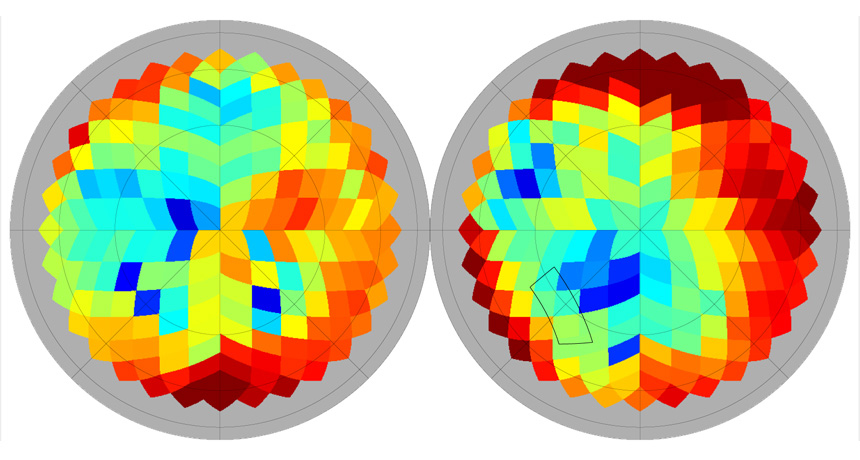Year in review: Dust obscures possible gravitational wave discovery
Ancient ripples in the fabric of the space square off against soot in the galaxy

NOT-SO-CLEAR SKIES The signal that BICEP2 researchers interpreted as gravitational waves may be due to interstellar dust. The Planck satellite mapped dust in the entire sky. The map shows the sky above the plane of the Milky Way (left) and below the galaxy’s plane (right). Planck found areas heavily contaminated by dust (red) and regions that are relatively clean (blue). The black box shows where BICEP2 searched for gravitational waves.
Planck collaboration







